Making assumptions can be dangerous, and making assumptions about who your ideal customer is can be the kiss of death for your business. Without a crystal-clear idea of who you should be targeting with your marketing messaging – and why – all your efforts could be for naught. This is why creating complex buyer personas for your target audience is so important.

In today’s post, I’ll be covering what buyer personas are (and aren’t), how to create them, and looking at some real examples.
Buyer Personas: An Overview
Simply put, buyer personas are composites of the values, behaviors, and characteristics of your perfect customers, distilled into unique summaries.
Buyer personas can be very complex or quite simple, depending on the nature of your business and the type of person who typically purchases your goods or services. However, buyer personas often include much of the same data, such as:
- Demographic data
- Behavior
- Motivations
- Objectives or goals
Let’s take a look at each of these qualities individually, and how they relate to buyer personas.
Buyer Persona Demographics
Demographic data forms the core of any solid buyer persona. Without this, it’s very difficult to create a suitably complex persona or truly understand who your ideal customers really are.
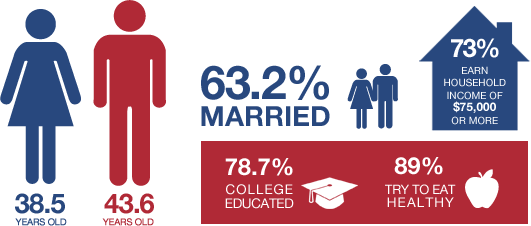
Demographic data is anything that helps you segment your potential market into more refined subcategories. This includes gender, age, income or education level, ethnicity, and so on. Depending on the needs of your business, demographic data can be quite broad or extremely specific. For example, many buyer personas feature an ideal age range of the perfect customer rather than a specific figure. The same principle applies to most demographic categories, such as income level. Others may be more specific, such as education level.
Demographic data is a great place to start when creating your own buyer personas. You could begin by stating that your ideal customer is:
- Between the ages of 35 and 45
- Female
- College-educated
- Earns $70,000 per year or more
We’re already starting to flesh out our example buyer persona, but for most businesses, the information above simply won’t be enough – we have to go deeper. This is where behavior comes in.
Consumer Behavior in Buyer Personas
Now that we’re starting to get a clearer idea of who our ideal customer is, we need to delve into how they behave in order to see a more complete picture of them.
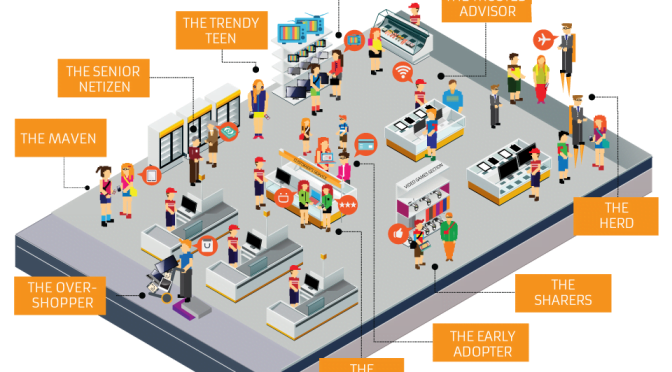
Incorporating consumer behavior into your buyer personas might seem like guesswork, but this stage should be as data-driven as any other part of your marketing strategy. To start identifying behavioral patterns of your ideal customers so you can incorporate them into your buyer personas, you’ll need to dive into your analytics data. What conversion paths do your ideal customers take? How and where do they interact with your marketing materials in the funnel? You can also use predictive analysis tools to identify potential paths to conversion.
You can think of the behavioral patterns of your consumers as the what in your buyer personas. Next, you need to think about objectives – the why of your personas.
Side note: As you’ve already seen, we’re going to be talking a lot about data in this post. That said, be sure you know the best practices for protecting your customer’s data!
Consumer Objectives
We’ve said it countless times before, but it bears repeating: consumers don’t want to buy things, they want to solve their problems – whatever they buy is merely a means to an end. This is why it’s practically a universal truth that people hate being sold to, because they don’t want to just buy stuff, they want to make their lives better.

This principle is the bedrock of consumer objectives. Once you’ve determined how your ideal customer buys things, you need to figure out why they buy things. This task can be a little more time-consuming, as you may have to rely on qualitative research such as surveys or questionnaires, but the more time you take to understand your customers’ motivations, the more accurate your buyer personas will be. Plus, you can refine your existing marketing strategies based on this newfound knowledge to make your nurture channels more effective.
How to Create Buyer Personas
Before you get started actually creating your buyer personas, you need to figure out which stage of the purchasing journey you’re creating them for. You might decide that you need a detailed buyer persona for a prospect in the education stage of the funnel, for instance. Remember – just because they’re called buyer personas doesn’t mean that these composites need to represent people who are ready and willing to make a purchase. You can create buyer personas for each stage of the purchasing journey (which you can establish by gathering customer insights).
Just as we broke down each composite part of a buyer persona in the section above, you should create your own buyer personas in stages, each building upon the specifics of the previous section. The most logical place to start is demographic data.
Creating A Buyer Persona: Demographics
To walk you through the buyer persona-creation process, let’s create a real persona using a fictitious example.
Let’s say you’re creating buyer personas for a landscaping and lawn care business. Using this as a starting point, you might decide that your ideal customer (or one of them, as we’ll see shortly) is:
- Male
- Between the ages of 35 and 55
- Has an annual income of at least $50,000
Before we go any further, let’s examine why this demographic data might apply to your first lawn care and landscaping business buyer persona.

Firstly, it’s a good idea to get a representative cross-section of your customer base in terms of gender. Even the most traditionally “masculine” businesses, such as hardware stores, are never exclusively male-oriented, and ignoring other parts of your customer base could be a mistake.
Secondly, the age demographic is important to this example business because of a few key facts (or educated guesses). For one, most people who would use the services of a landscaping and lawn care business are homeowners, because rental tenants are usually not responsible for the maintenance of the grounds surrounding an apartment or rental property. With this in mind, we can assume (with a reasonable degree of certainty) that your ideal customer is between the ages of 35 and 55 because rates of home ownership are significantly higher among older age brackets.
Something else to consider is the average mortgage in the United States. Given that the average mortgage is around $235,000, we can extrapolate that the average homeowner would have to earn at least $50,000 per year to afford the monthly repayments on this size mortgage (average interest rates of 4.5% included).
Now we’re starting to get somewhere. Your buyer persona might need more demographic detail than this, but you can see how breaking down logical assumptions about the type of person who could use your products or services can serve as a reasonably accurate baseline.
Creating a Buyer Persona: Consumer Behavior
The next step when creating your buyer persona concerns behavior.
This stage may not be as easily summarized as the demographic data, as the ways in which real people behave are often much more complicated than the relatively simple buckets they fit into demographically.

This stage is also when demographic data such as gender can become increasingly important. For instance, let’s say your first persona is for your ideal male customer. While it’s important to rely on data, not assumptions, certain types of behavior can be characteristic of many people. For instance, your ideal male customer may know (or assumes he knows) more about lawn care or landscaping than the “average” person. This behavior might result in more direct inquiries about your services, or limit the potential for upsell opportunities. Similarly, this customer – based on their behavior – might be highly goal-oriented with their purchasing decisions, whereas a female customer might be more aspirational.
Whatever behaviors you incorporate into your buyer personas, it’s vital that you base this on real data from your conversion paths. Examine conversion data from Google Analytics and really look at the various journeys your best customers take, from the education phase right through to purchasing. How much information do they need before taking action? How long is their customer lifecycle compared to “casual” customers? Are you doing enough to engage them and provide them with the information and resources they need to commit to a purchase?
Making assumptions about how people behave can be catastrophic, not least because you could spend a great deal of time and money appealing to the wrong people based on the wrong behaviors.
Creating a Buyer Persona: Consumer Objectives
Once you’ve identified how your customers behave, it’s a lot easier to evaluate their ultimate goals – a crucial part of any buyer persona.
At its simplest, you can think of consumer objectives as whatever your ideal customer sits down to accomplish when they click on your ad, buy something on your website, or pick up the phone to call your business. None of these actions takes place accidentally – there is always an objective in mind.
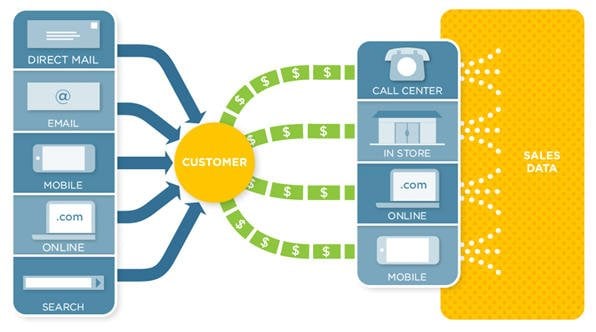
There are several possible objectives prospective customers may have when interacting with your business:
- Price comparison
- Informational inquiry
- Direct purchase
Each of these objectives can take several forms. For example, the price comparison objective could also include elements of an informational inquiry, say, if the prospect just wants to know how much you charge to uproot a stubborn tree stump. Similarly, these objectives can change fluidly on the fly. A prospect might call to find out how much something costs, only to be so impressed by your competitive rates that they convert immediately by purchasing your services. As such, it’s important to assign your buyer personas objectives that both align with your sales funnel and can progress from one stage to another.
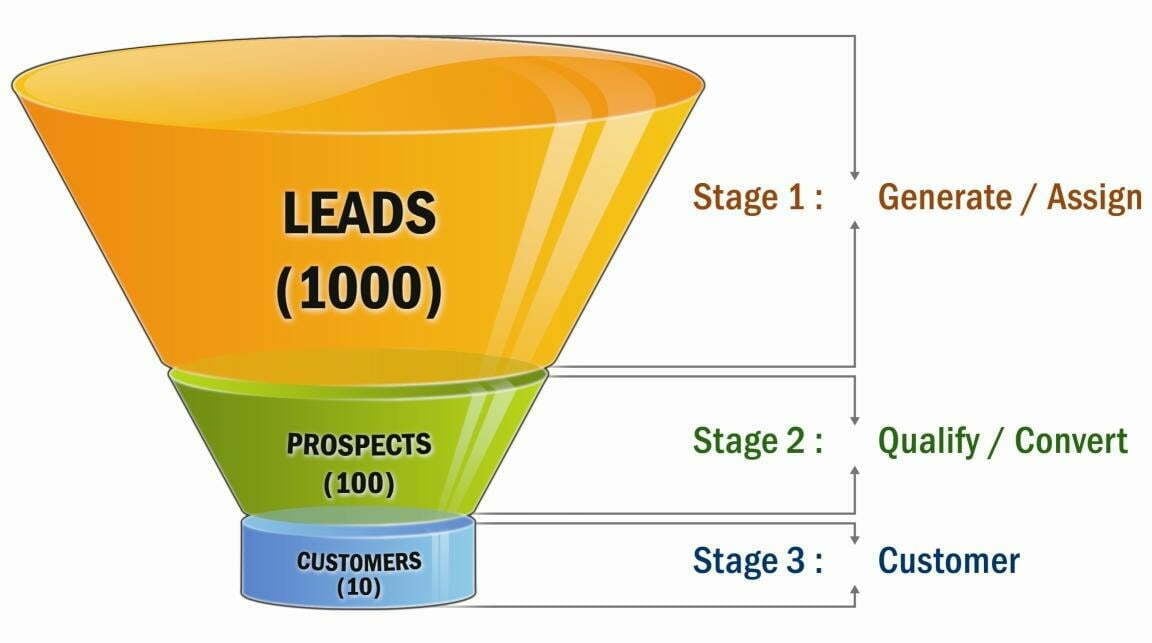
As with behavior, consumer objectives should be determined based on actual data from your conversion paths and nurture programs, and applied to the data you’ve already gathered for the other parts of your personas. For example, one of your buyer personas might begin to look a little like this once behavior and objectives have been taken into account:
- Male
- Between the ages of 35 and 55
- Has an annual income of at least $50,000
- Homeowner
- Visits websites several times to gather necessary information
- Directly compares/contrasts similar business sites to ascertain value
- Prefers sites with comprehensive pricing information
- Strongly motivated by pricing incentives/discounts
With this level of detail, your buyer personas allow you to craft increasingly refined marketing messaging that directly appeals to this individual. The demographic data prequalifies them as a viable lead or potential customer, your educational materials can appeal to their desire to seek out plenty of information before committing to a decision, and your pricing page can help offset potential objections and remove a barrier between the prospect and a conversion.
Of course, every business is unique, and so no two buyer personas will be completely identical. However, it’s just as important to consider negative personas as it is to create detailed, accurate composites of your ideal customers.
What Are Negative Buyer Personas?
Simply put, negative buyer personas are composite profiles of people you don’t want to buy from you. If negative keywords are keywords you want to exclude from your PPC campaigns, then negative personas are profiles of customers you don’t want to advertise or market to.
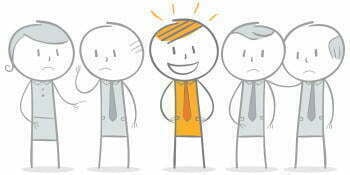
You may find it easier to create negative buyer personas once your actual buyer personas are complete, as your negatives will, for the most part, be polar opposites of your ideal customers. As with your buyer personas, demographic data is a great starting point when creating your negatives, as you can quickly and easily identify demographics that don’t apply to your business.
In keeping with our landscaping and lawn care business example, you could start creating a negative buyer persona by stating that you’re not interested in marketing to individuals who:
- Rent their home, rather than own it
- Earn less than $50,000 per year (or have little disposable income)
Obviously this is a relatively simplistic starting point, but when it comes to identifying people who aren’t likely to purchase your goods or services, it’s easier to find characteristics of people who don’t qualify as viable leads than it is to identify the traits of your perfect would-be customer.
One thing to bear in mind when creating negative buyer personas is to not be too exclusive, as this could narrow your potential customer base too excessively, or to discount the possibility that someone who isn’t an ideal customer right now could become one in the future. A negative buyer persona that is too broad could inadvertently exclude individuals who are still in the consideration phase of the funnel, so try to focus on qualities that definitively exclude them from your interest, such as income level or home ownership status in our example above.
Get to Know Your Ideal Customers
Obviously it’s difficult to create perfect buyer personas without knowing more about your business and the type of person to whom you’re marketing, but hopefully these tips have given you some ideas on how you can create your own personas. For more help, check out these buyer persona examples.
If you have any questions about anything in the post, let me know in the comments and I’ll answer them as best I can.







